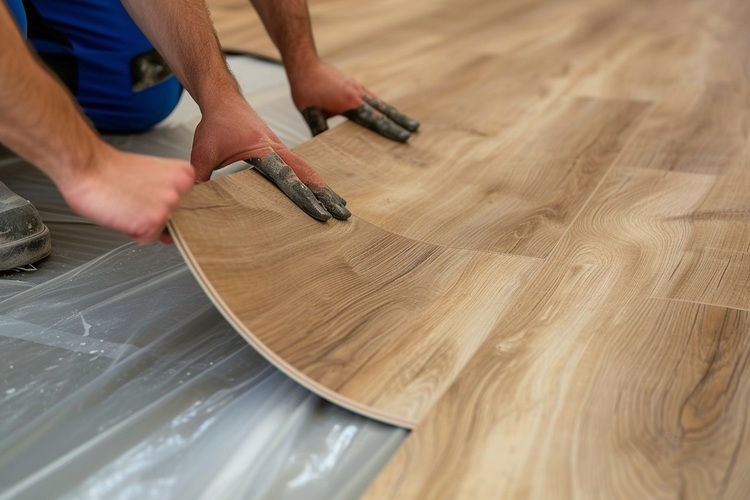Engineered Wood Flooring: A Stylish and Durable Alternative to Solid Hardwood
When it comes to flooring options that combine the warmth and beauty of natural wood with enhanced durability and versatility, engineered wood flooring stands out as an excellent choice. This innovative flooring solution offers the aesthetic appeal of traditional hardwood while addressing many of its limitations. Whether you're renovating your home or building a new space, engineered wood flooring provides a compelling alternative that balances visual appeal, practical performance, and value. Let's explore what makes this flooring option increasingly popular among homeowners and designers alike.

What Is Engineered Wood Flooring?
Engineered wood flooring consists of multiple layers of wood pressed together, with a top layer of genuine hardwood veneer. Unlike solid hardwood, which is milled from a single piece of timber, engineered wood features a construction of cross-layered plywood or high-density fiberboard (HDF) base layers topped with a real wood surface. This structure creates dimensional stability that allows the flooring to resist the natural expansion and contraction that occurs with temperature and humidity changes. The top layer—typically ranging from 0.6mm to 6mm in thickness—provides the beautiful grain and texture of real wood while the engineered core delivers enhanced structural integrity.
Key Advantages Over Solid Hardwood
Engineered wood flooring offers several significant benefits compared to traditional solid hardwood. First, its layered construction provides superior stability in environments where moisture and temperature fluctuations are common—including basements, kitchens, and bathrooms—areas where solid hardwood is typically not recommended. This resistance to warping and cupping makes engineered wood a more versatile option throughout the home.
Additionally, engineered flooring is often more eco-friendly than solid hardwood. The manufacturing process uses less of the slow-growing hardwood species, as the veneer layer requires significantly less of the premium wood than solid planks. Many manufacturers also source sustainable materials for the core layers, further reducing environmental impact.
Installation flexibility represents another major advantage. Engineered wood can be installed using various methods, including floating installations that don’t require nails or glue, making it suitable for DIY projects. Many products also work seamlessly with radiant heating systems, which isn’t always possible with solid hardwood floors.
Styles and Finishes Available
The market offers an impressive array of engineered wood flooring styles to suit virtually any interior design preference. Wood species options are extensive, from traditional oak, maple, and walnut to exotic varieties like Brazilian cherry and tigerwood. The veneer layer preserves the authentic character, grain patterns, and natural color variations of these species.
Beyond species selection, engineered wood comes in various finishes and textures. Options include smooth-sanded surfaces, hand-scraped textures that provide an artisanal appearance, wire-brushed finishes that emphasize the wood grain, and distressed treatments that create a weathered, vintage look. Color options range from natural unstained appearances to rich, dark stains and even contemporary whitewashed or gray-toned finishes.
Plank widths and installation patterns further expand design possibilities. Wide-plank formats create a spacious, modern aesthetic, while traditional narrow boards offer timeless appeal. Herringbone and chevron patterns provide sophisticated design statements that enhance formal spaces.
Price Range and Cost Factors
Engineered wood flooring spans a wide price spectrum, making it accessible for different budget levels. Entry-level products typically start around $3-$5 per square foot, mid-range options fall between $5-$10 per square foot, and premium engineered flooring can cost $10-$15+ per square foot. Several factors influence the final cost:
-
Veneer thickness: Thicker top layers command higher prices and allow for multiple refinishing cycles
-
Wood species: Exotic or rare hardwoods cost more than common domestic varieties
-
Finish quality: Hand-finished or specialized treatments increase costs
-
Core material: High-density cores with enhanced stability typically cost more
-
Installation method: Floating systems may reduce installation costs compared to glue-down or nail-down methods
| Quality Level | Price Range (per sq ft) | Veneer Thickness | Expected Lifespan |
|---|---|---|---|
| Entry-Level | $3-$5 | 0.6mm-1.5mm | 10-15 years |
| Mid-Range | $5-$10 | 2mm-3mm | 15-25 years |
| Premium | $10-$15+ | 3mm-6mm | 25-30+ years |
Prices, rates, or cost estimates mentioned in this article are based on the latest available information but may change over time. Independent research is advised before making financial decisions.
Beyond material costs, installation expenses typically range from $3-$8 per square foot depending on your location, floor preparation requirements, and installation method. Additional costs may include underlayment, trim pieces, removal and disposal of existing flooring, and furniture moving services.
Care and Maintenance Tips
Engineered wood flooring is relatively low-maintenance compared to solid hardwood, but proper care ensures its longevity and appearance. Daily maintenance simply requires sweeping or vacuuming with a soft brush attachment to remove grit and debris that could scratch the surface. For deeper cleaning, use a slightly damp mop with a manufacturer-approved cleaner specifically formulated for wood floors.
Preventative measures significantly extend floor life. Place felt pads under furniture legs, use protective mats in high-traffic areas, and immediately clean up spills to prevent moisture damage. Maintain indoor humidity levels between 30-50% to prevent excessive expansion or contraction of the wood layers.
Unlike solid hardwood, engineered floors typically have limitations on how many times they can be refinished, depending on the thickness of the veneer layer. Premium products with thicker wear layers (3mm+) may allow for multiple refinishing cycles, while thinner veneers might support only one light refinishing or none at all.
Engineered wood flooring represents an excellent compromise between the authentic beauty of hardwood and the practical requirements of modern living. By understanding its composition, benefits, style options, costs, and maintenance needs, you can make an informed decision about whether this versatile flooring option is right for your home.




